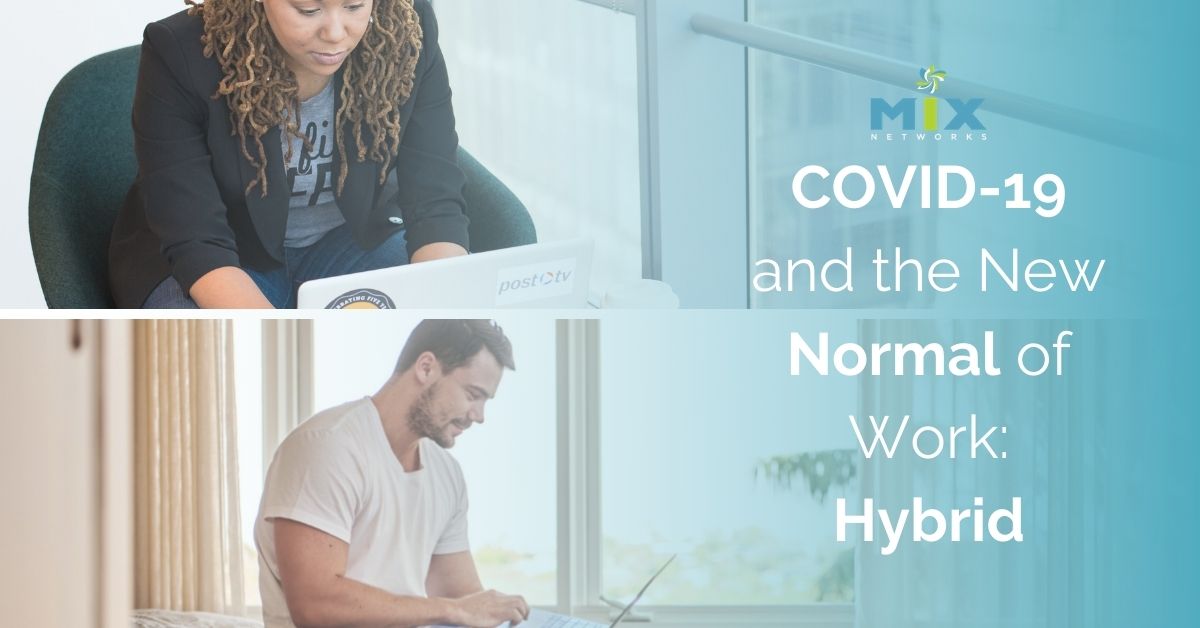There is no denying this last year was enlightening in so many ways, but one of the big ones was a complete realignment with how we believe work gets done. Remote work, hybrid-work, flexible work. While work was already trending this way, we learned that work could get done from home in those back-office positions that do not interact with consumers face-to-face. Consider these statistics:
- 80% of businesses plan to allow workers to work remotely part of the time, while 47% will enable full-time work from home. Gartner
- 31% of surveyed employees want a hybrid work environment, while 65% want full-time work from home environments. This means that 96% of surveyed workers wish to remain in some form of remote work. FlexJobs
- Almost 42% of workers continue to work from home even now that businesses are mainly re-opening their office doors, and it is estimated that at least 26% will continue to do so throughout 2021. Upwork
What’s more insightful is a PwC survey found 83% of employers felt their transition to remote work at the height of the COVID-19 pandemic was successful. And another study cited by Forbes reported that the adoption of Unified Communications is up 41% compared to last year.
However you break it down, the trend is crystal clear. Remote and hybrid-work are not going away. Employee well-being is finally being given the priority it should have, and the typical work week will look different for everyone, depending on their job role.
Ed Bishop, the CTO of Tessian, said that the new normal of work is a workplace of choice, and how he sees things play out is employees will have one of three ways of working. They are:
- An office-based employee who goes into the office at least three times a week with a set desk to work at.
- A flexible employee who goes into the office once or twice a week and works at a bookable hot desk.
- A remote employee who visits one of our office hubs a few times a year.
How an employee connects to your internal resources will be different, depending on their chosen path. And their choice may change throughout the year and their career with your company. Being prepared will be vital to making a workplace of choice successful. Let us take a look at potential setups for each of the choices.
An office-based employee visiting in person at least three times a week with a set desk.
There are several ways you can meet the communications needs of this employee. One is, you have a standard IP handset at both the worker’s home desk and office desk that point to the same extension. Or you can set the worker up with a standard IP handset at their office desk with a mobile application they can use when they are not in the office. Either way, simple routing tools, and scheduling can facilitate this routinely and seamlessly.
A flexible employee who goes into the office one or two times a week and works at a bookable desk.
For this setup, you have two options – an assigned IP handset for the bookable desk with the worker logging into the phone and out during their time at that desk (hotdesking) or an application installed on mobile devices that can make the devices function as employees’ desk phones/extensions.
A remote employee who visits one of your office hubs a few times a year.
The main extension will be in this employee’s home office, with the ability to hot desk into their extension in one of the bookable desks when they work from the business office.
Five UCaaS Trends for 2021 to Support Hybrid-Work
Computer Weekly reported that interest in UCaaS spiked 86% over the last 18 months as businesses undertook a year’s worth of digital transformation in just months. Key drivers for the rapid change were flexibility and agility as the world came to a sudden stop early in 2020 and businesses everywhere scrambled to continue operations from outside their traditional physical footprint. As we are now halfway through 2021, Search UC found these five trends for 2021, which are summarized below:
UC as a Service (UCaaS) is king
Metrigy’s 2021-2022 global study on workplace collaboration found that 47.5% of the 467 companies benchmarked now fully rely on the cloud for their communications needs proving that UCaaS is king.
Video overtakes Voice
Metrigy’s survey found that 87% of businesses surveyed indicate video is a critical or important service within their organizations, and 82% reported using video for all or most meetings.
Team collaboration becomes a hub
The core UI of UCaaS is team collaboration with most vendors (including Mix Networks) now offering a solution. The majority of businesses surveyed (57.1%) view it as a work hub, meaning that they plan to integrate other apps into the platform.
The focus shifts from implementation to security
Last year, at the height of the pandemic, unified communications solutions were adopted quickly, without much thought given on how to properly secure them at the endpoint. Now that it is over, businesses are looking to secure those endpoints, whether at the office or the worker’s home. Successful companies, according to Metrigy, have a proactive collaboration security plan already in place.
The new office is at home
Poor internet, lack of visibility, ensuring engagement, and securing endpoints have created new challenges for IT. Metrigy says that successful organizations proactively support remote employees with Wi-Fi support, ISP selection, and performance management of voice and video apps, as well as investing in new platforms for security protection in light of the growing phishing and ransomware attacks.
The 9-5 is Gone, Hybrid-Work is Here to Stay
Microsoft. Google. Apple. Ford and Citibank. All have determined that moving forward post-pandemic that all of their employees will have the ability to actively choose where they work. Hybrid-Work, typically those that follow a three days in-office and two days out of office, is a trend that will continue long after the pandemic is completely in the rearview mirror. The question is, how will your organization solve the communications challenges that can sometimes come with?








